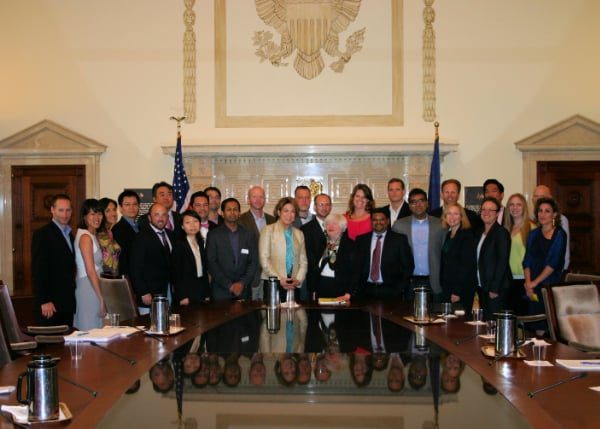Special journal issue celebrates 20 years of open innovation

Jerry Engel
When Jerome Engel and colleagues presented a framework to describe innovation communities in 2014, the world was a different place. That book, Global Clusters of Innovation: Entrepreneurial Engines of Economic Growth around the World, explored the explosion and global trendsetting impact of Silicon Valley new venture development business practices. Now Engel has refined and extended that framework with Clusters of Innovation in the Age of Disruption (Edward Elgar Publishing, 2022), a collection of essays from business leaders and teachers worldwide. Berkeley Haas asked Engel, the founding executive director emeritus of the Lester Center for Entrepreneurship (now the Berkeley Haas Entrepreneurship Program), about his new findings.
What made you want to revisit your study of clusters of innovation?
In my first book, we outlined and demonstrated how innovative technology companies tend to emerge in clusters in certain regions—and we questioned what drives that process. The world has since entered a period of severe economic, cultural, and environmental disruption due to an ongoing series shocks. We wanted to investigate what was happening in these innovative communities and whether they demonstrate enhanced resilience. We found that the answer was a profound “yes”. Clusters of Innovation demonstrate an entrepreneurial agility that enhances their resilience to external shocks, contributing significant social and economic value to society.
How do they do this?
Through innovation, which I define as the positive response to change. Trends are obvious, especially technology trends which tend to be of relatively long duration. While a tech trend is not in itself innovation, its adoption into a valuable good or service is. Commercialization of such tech trends is often pursued by venture-capital backed entrepreneurial firms. Their initial market entry strategy is often to approach niche markets that provide a beachhead opportunity because incumbent firms are not serving their needs exactly. So smaller firms gain traction by providing these niche markets with products and services that provide a tight product market fit. Many entrepreneurial firms that blossomed in the midst of the pandemic were prepared for years before the pandemic. Their work in refining their technology and products put them in a position to provide solutions of huge impact quickly when the pandemic hit. This agility enhanced the resiliency, as they were already in the market with a limited but proven track record—so their businesses were positioned to explode into an “overnight success” when the shock occurred.
Can you provide examples of this?
Two clear, and very different, examples are Zoom in telecommunications and mRNA vaccine development in health care. Zoom had an innovative business model and mRNA developers embraced deep technology innovation. Zoom displaced slower- moving Cisco (WebEx), Microsoft (Skype/Teams), and other incumbents in revolutionizing business, personal, and education communication. Zoom became a verb, a place, a way of conducting much of our daily life. Zoom’s quick mass adoption revolved around a subtle business model innovation: Product-Led-Growth [PLG]. PLG is an evolution of the freemium model, where ease of user adoption is emphasized (just click the link, no log-ins, no hassle) and is often free. Traditional marketing is initially de-emphasized and that investment pored back into product development and viral marketing. Revenue evolves eventually from upselling to universities and larger businesses with value-added full-featured SaaS subscriptions. This ease of adoption drove the rapid behavior change that enabled a greater collective agility and a greater resilience.
A different type of innovation-driven agility is demonstrated in mRNA technology, which enabled the creation of vaccines in months rather than many years. Startups commercialized the novel mRNA vaccine technology, based on university research, before the pandemic. While the fundamental technology was revolutionary, its impact on the health of the general population was minimal. But during the pandemic, the benefits of this novel approach and the urgent need for a vaccine made its advantages clear, gaining the full attention major pharmaceutical firms. The rapid development and deployment of the various Covid-19 vaccines often depended on partnerships with major pharmaceutical companies, providing a perfect combination of speed and scale. The smaller firms’ product development speed combined with the larger firms’ capacity to scale trials, manufacture, and distribute.
What’s the takeaway from the book?
Economic regions such as Silicon Valley and other Clusters of Innovation around the world have proven to have enhanced resiliency to economic and environmental shocks. At the heart of such Clusters of Innovation are entrepreneurs, collaborating with venture investors and major corporations. Their constructive interactions build the resiliency required to quickly adapt and rebound from shocks. The process is helped by supportive government, universities, service firms, and other supporting actors in the community.
Posted in:
Topics:



